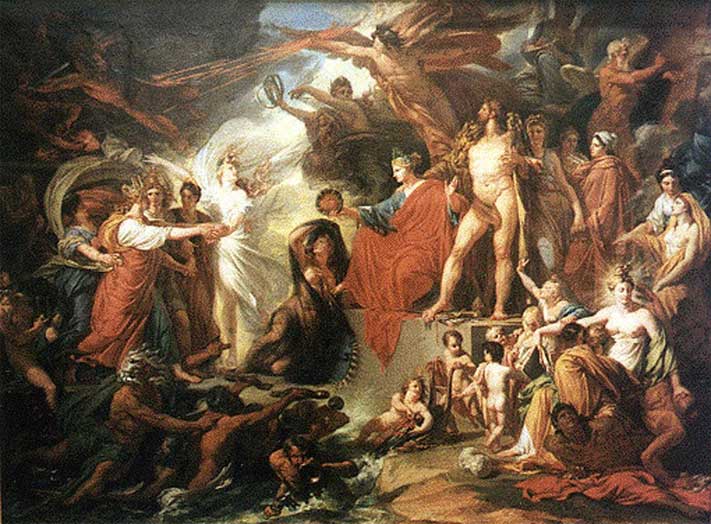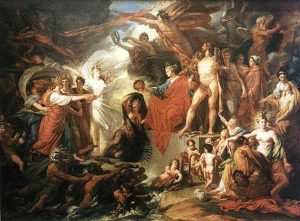
Greek Mythology Deities
Deities

Eileithyia, goddess of childbirth, the doctor god Asclepius, the war god Enyalios and his companion Enyo, Hecate, a slender virgin night goddess, holding torches, accompanied by barking dogs, present on Persephone’s journey to Hades , Prometheus, Leto, mother of Apollo and Artemis, Thetis, a sea deity accompanied by the Nereids, Lefkothea and Evrynomi, Sea creatures with the names Forkys, Glaucus, Proteus, Nireus, Forkis, and onwards, in Attica.
Other deities are organized in groups according to their gender and age. Youthful forms are considered more important, they are in motion, dance, song, mania. They are often organized in threes. Instead of gods, they are called demons, servants and forerunners, amphipoles and propolis of a goddess or a god, usually one of the great Olympians, such as the Kavirs, the Koryvantes, the Dioscuri, etc.
These groups echo real troupes, as evidenced by dance and music. Maenades, aunts, satyrs in the circle of Dionysus, and male associates of Kourites in Ephesus are certainly testified in real life. Centaurs refer to actors in disguise, just as mermaids are first and foremost masks. Behind the Kavirs, the Idea Daktylos, the Telchines and the Cyclops are blacksmiths’ guilds. Graces, Muses, Nereids, Oceanids are girls’ dances. Panas and Eileithyia are also given in the plural (obviously the women of the neighborhood who help a woman give birth).
Poetry describes these groups as members of the world of gods: Satyrs and Maenads dance around Dionysus, Nymphs surround Artemis, Kourites and Koryvantes dance around the newborn Zeus or the throne Dionysus, Muses surround Apollo Oceanids accompany Persephone to the meadow of her abduction, the Cyclops forge the lightning of Zeus. Titans and Telchins appear as representatives of an ancient era. Finally, some of them are found only in mythology (Titans, Giants), while others enjoy significant worship, such as the Muses, the Graces, the Kavirs.
Many of the deities are forces of nature. Cities honor their rivers and springs with a special mosque or temple. The cult of the winds and Apollo-Sun was more alive. The Moon and Eo, goddess of the dawn, also appear in some myths, while the worship of the Earth in the traditional religion is particularly limited to hooves in cracks of the earth. The existence of such deities led to the idea that gods are personifications of natural phenomena. It is true that many times the physical is identified with the divine (Sun, Moon). But the worship of such deities in the Greek religion receded in the face of the divine forms established by worship and poetry.